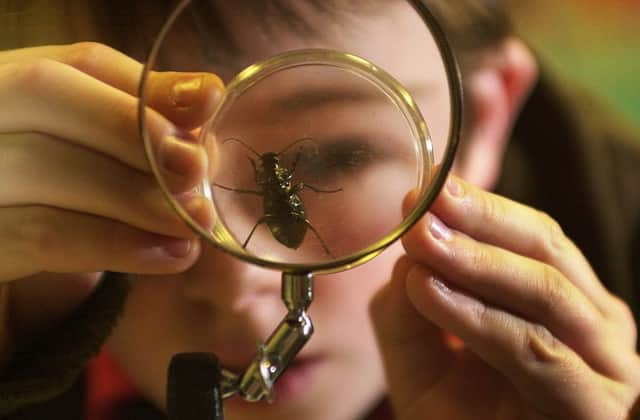We won’t let the wildlife bug us
This article contains affiliate links. We may earn a small commission on items purchased through this article, but that does not affect our editorial judgement.


Houses, especially historic houses, provide insects with good living: somewhere affordable to live, an easy commute to work, excellent food just around the corner and a safe environment for the kids.
Without realising it we’ve provided insects with an ideal home that few estate agents could compete with.
Advertisement
Hide AdAdvertisement
Hide AdOf course, insects have a slight advantage over us. We’ve only been looking for the right cave or two up two down for 200,000 years or so, insects have been scouring the planet seeking the perfect pad for 400 million years. They know a good thing when they see it.
Cold-blooded insects control their body temperature mostly through external sources of heat, such as the sun. Think of a sluggish bumblebee on a cold summer’s morning that needs the dawn’s rays on its back to get going. If there is a free source of constant heat, insects have more time to pursue other worthwhile activities. Like breeding. Let’s face it, not many animals get amorous unless the temperature is right. Central heating in our homes gives insects more “energy” and hence they can be more active, doing what comes naturally but more frequently.
It is therefore no surprise that we see woodworm holes in those patches of flooring where the sun always hits, or in a tell-tale pattern over the route of an under floor hot water pipe.
For many insect pests, especially woodborers, home is also a great food source. Wood panelling, skirting boards, shelving, furniture and wicker baskets are all perfectly good harbourages. They are also very nutritious if you have the right physiology. Why waste time and energy and risk meeting predators by leaving a safe abode for food when you can make it surround you? If you only have to venture from home once in a lifetime to find a mate you significantly reduce the chances of being taken out by a passing spider, mouse or vacuum cleaner.
This applies to moths or carpet beetles too who need high protein snacks such as wool, fur or feathers. Webbing clothes moths seek out tasty accommodation they can eat and live on, spinning their equivalent of one-man tents to ensure they are protected from the desert conditions of a centrally heated home.
As we know only too well in caring for the National Trust for Scotland’s properties, over the millennia humans have brought the outside inside. Our floors, ceilings, walls and furniture are made from forests. They also frame our paintings and form the pages of our books. Grasses seed our homes, making the glues and pastes that hold the floral pattern on the wall or the leather jacket to a book. Animals stalk our hallways, with sheep’s wool on the floor and in the wardrobe. Cattle “graze” in the form of an old, comfy leather armchair. All the natural fibres and animal products we covet so much sustain insects outside, so it no surprise that the same is true indoors.
Most of us know too well that finding the right mate is a problem. For insects though, our homes act as speed dating agencies. As any relationship counsellor will tell you, if you socialise near to where you live and eat (unless you are into computer games), you are more likely to find a companion than if you frantically take to the skies looking for a damselfly in distress.
Once the courting is over, all new parents aspire to healthy, well-fed offspring with prospects for the future. Bringing them up in the relative safely of an Ikea bedroom table or a 17th century tapestry rather gives them a great start. These are tried and tested locations and with enough food for a few more generations.
Advertisement
Hide AdAdvertisement
Hide AdNTS is a conservation charity and it is not in the business of destroying wildlife. Our integrated pest management programme to control insects causing damage is based on simple steps to help us protect our collections.
Firstly, we try to deter entry and good housekeeping makes locations less desirable to an insect eye. If we can’t keep them out, we need to know what and where the insect is and how numerous. Our highly trained staff can identify significant outbreaks and we treat infestations only when we have to. We use the most environmentally friendly methods appropriate to each case and only use pesticides when absolutely necessary.
A place for everyone, indeed – albeit the right place.
• Mel Houston ACR is a Conservator with the National Trust for Scotland’s Collections Conservation Services www.nts.org.uk